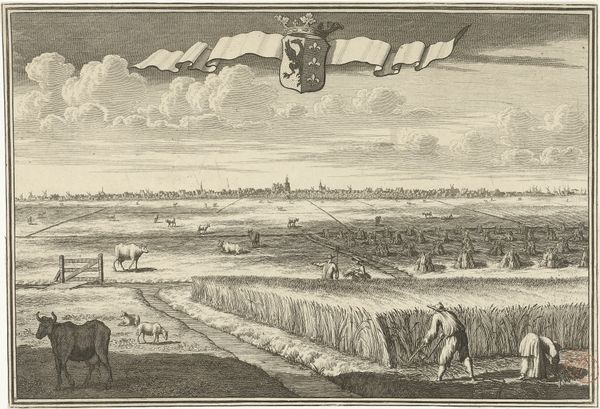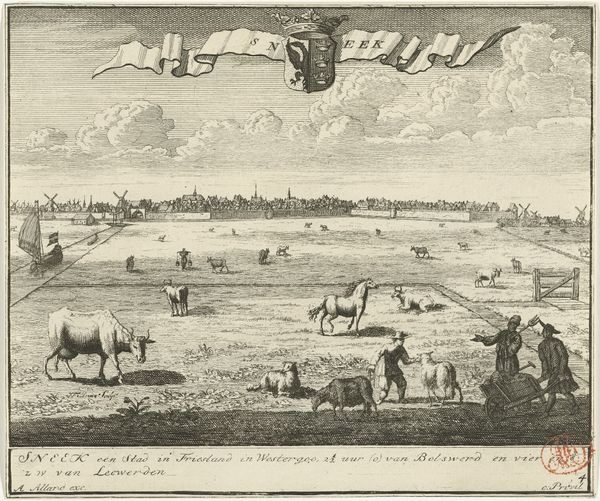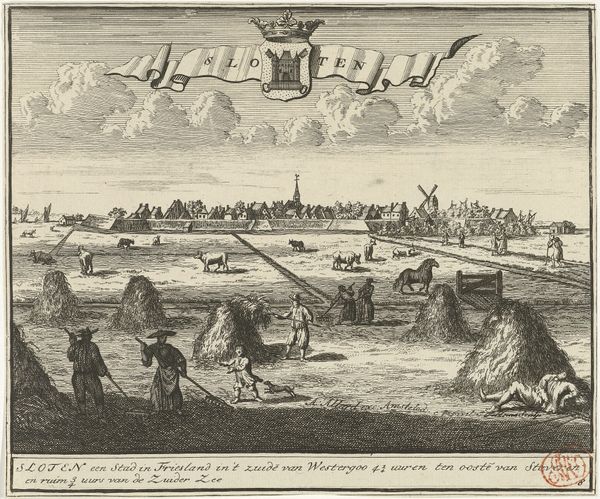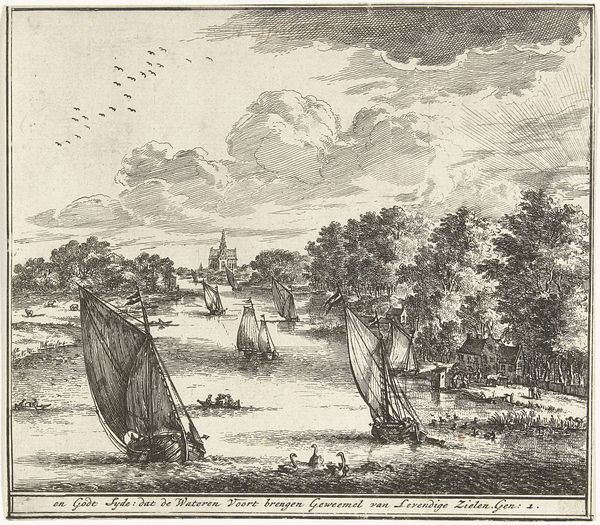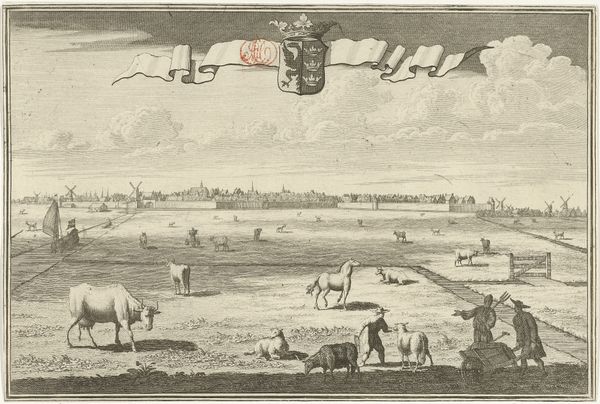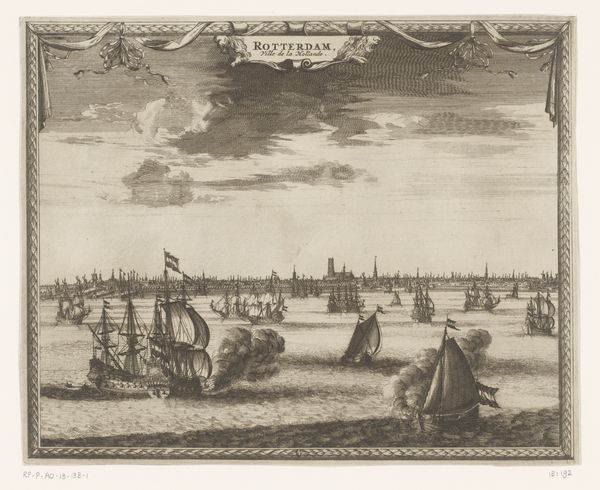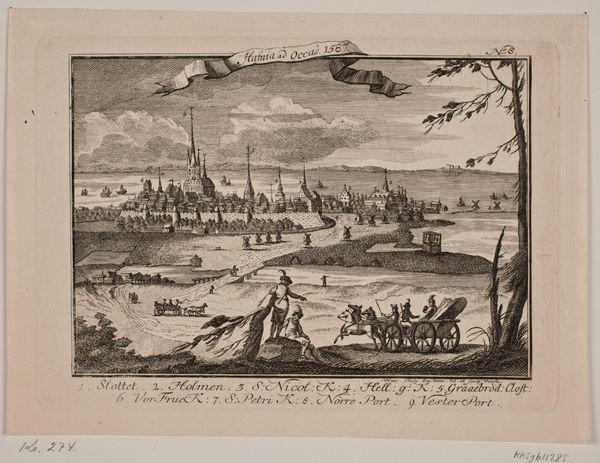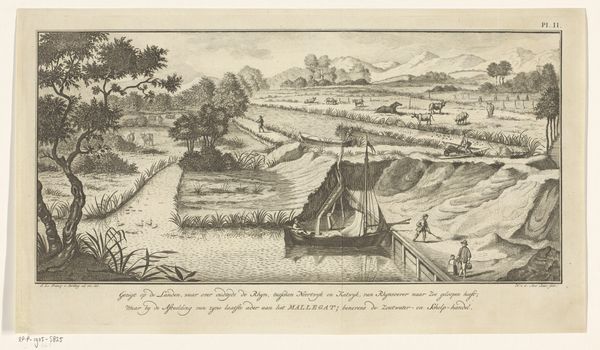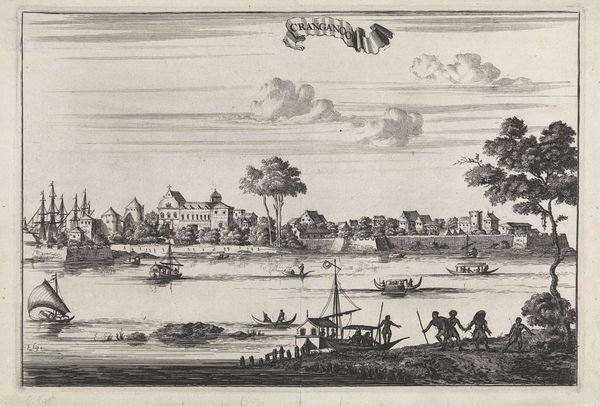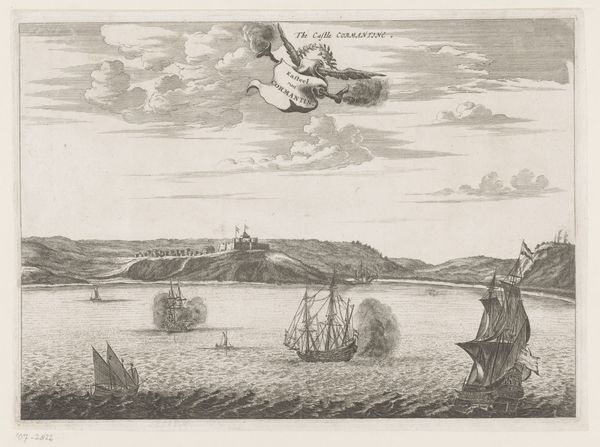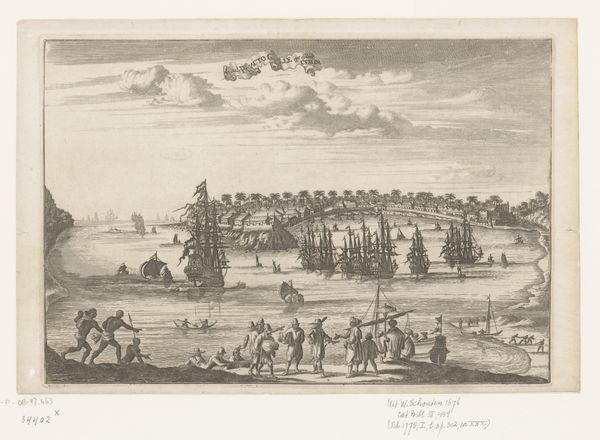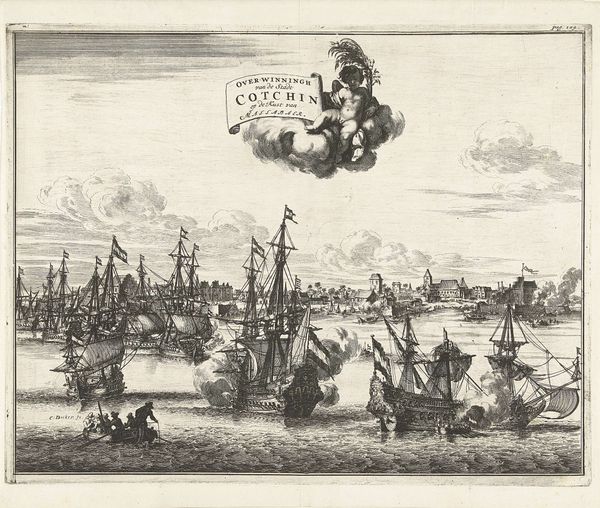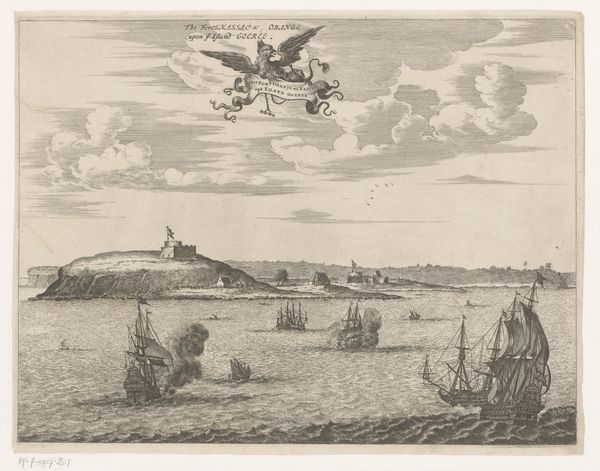
drawing, print, ink, engraving
#
drawing
#
dutch-golden-age
#
mechanical pen drawing
# print
#
pen illustration
#
pen sketch
#
old engraving style
#
landscape
#
personal sketchbook
#
ink
#
pen-ink sketch
#
pen work
#
sketchbook drawing
#
cityscape
#
storyboard and sketchbook work
#
sketchbook art
#
engraving
Dimensions: height 154 mm, width 193 mm
Copyright: Rijks Museum: Open Domain
Editor: This is "Gezicht op IJlst," an engraving by Jacob Folkema, dating from around 1702-1725. I’m struck by how much is going on in one scene. It feels almost like a bird’s eye view, capturing daily life and the surrounding landscape all at once. What do you see when you look at it? Curator: Indeed, it's a rich tapestry of early 18th-century Dutch life. Consider the symbolism interwoven here. We have the town’s coat of arms prominently displayed, anchoring our understanding of place and civic pride. Notice how the artist juxtaposes the domesticity of grazing cattle with the commercial activity on the water. Does that tell you anything? Editor: It speaks to a harmonious coexistence, perhaps? The land provides, and the waterways facilitate trade and connection. The figures in boats feel smaller, perhaps less significant, in the context of the scene. Curator: Precisely! The seemingly simple act of depicting both land and water underscores the duality of human existence – our reliance on both nature's bounty and our ingenuity to navigate it. The windmills also speak of ingenuity and technological prowess. What do those grazing animals symbolize to you? Editor: They evoke pastoral ideals – simpler times, self-sufficiency, and a connection to the land. Almost a pre-industrial nostalgia, maybe? Curator: Possibly, yes, a romantic counterpoint to the burgeoning trade hinted at by the boats. But the image is not just about the ideal; the livestock are clearly a source of sustenance and economic prosperity. Folkema deftly weaves these threads together, constructing a narrative of community and land. What about that inscription, does that hint at what these images are meant to do? Editor: Right! The description at the bottom indicates it depicts a town in Friesland close to Sneek. It connects this depiction to an actual, identifiable location! So this landscape embodies a distinct regional identity through careful observation, imagination, and memory. I’m starting to see that. Curator: Exactly. By examining the layers of imagery, we move beyond the literal representation, revealing the cultural values, the shared identity, and enduring connection to a sense of place that resonates through time. This is why even what looks to be a simple pen sketch can tell such a potent story.
Comments
No comments
Be the first to comment and join the conversation on the ultimate creative platform.
